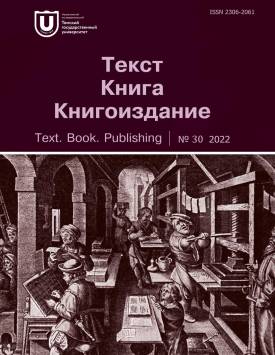Anton Chekhov’s novella The Steppe in English translations
Chekhov’s works have been actively translated into English for 130 years; however, these translations have scarcely been addressed systematically and remain understudied. This is especially relevant in case of his stories and novellas. This article focuses on the translations of Chekhov’s The Steppe - a novella that marked the writer’s transition from early stories to mature prose. The 20th and 21st centuries have seen five English translations of The Steppe, which mark five main stages of its reception. The novella was first introduced to the English-speaking reader by E.L. Kaye in 1916. Though highly criticized for literalism and unsuccessful methods of translating Russian realia, Kaye’s translation played an important role in the development of the creative dialogue between Chekhov and K. Mansfield, which clearly reflected the influence of Chekhov’s prose on the formation of modern English literature. The canonical translations by C. Garnett determined Chekhov’s reception in England and the United States from the 1920s to the 1950s. The translator introduced Chekhov to the English-speaking reader as an artist of Russian life, a master in depicting various types of characters, and as a thorough researcher of a person’s inner world. This vision determined a specific perspective in the 1919 translation of The Steppe, where Father Christopher is foregrounded as a collective image of the Russian clergy. In the new stage of perception in the 1970s-1980s, Chekhov, a foreign writer, was organically accepted by the English-speaking culture as “its own”. This stage brought about the translation of The Steppe by R. Hingley, who authored two monographs about Chekhov and was the editor of The Oxford Chekhov (1964-1980). Hingley considered Chekhov’s mature prose as the most valuable part of the writer’s literary legacy. For the first time, The Oxford Chekhov adequately describes The Steppe as Chekhov’s landmark work. The strategy of cultural appropriation in Hingley’s translation implied modernization of Chekhov’s language. The translations by R. Wilkes (2001) and R. Pevear and L. Volokhonsky (2004) represent the latest stage in the English-language reception of The Steppe. They are associated with the general trend towards updating the corpus of translations of Russian classics into English in the 2000s. In their translation, Pevear and Volokhonsky use the strategy of estrangement, opposed to “smooth” translation, typical for English culture. The translators’ interest in the novella resulted from Chekhov’s genre innovation. All the translations of The Steppe are independent representations of the original, which demonstrate the productive reception of the novella in the English-language culture of the 20th and 21st centuries. Their comparative analysis has revealed that the biggest challenge in translation is the image of the steppe, which is associated with the main philosophical meanings of the work. This is evidenced by the significant transformations of the motifs of space and distance, which form the spatial dominant of the image in the original. In most translations, the semantically integral motifs of the original break into a number of components with weaker meanings. The research has shown that these transformations come from objective cultural and linguistic differences that limit the possibilities of a full-fledged translation, as well as from individual strategies of translators, who differently assess the role and meaning of these verbal motifs in the original text. The authors declare no conflicts of interests.
Keywords
English reception, literary translation, The Steppe, Anton ChekhovAuthors
| Name | Organization | |
| Olitskaya Daria A. | Tomsk State University | d.olitskaya@mail.ru |
| Chertkova Victoria V. | Tomsk State University |
References

Anton Chekhov’s novella The Steppe in English translations | Tekst. Kniga. Knigoizdanie - Text. Book. Publishing. 2022. № 30. DOI: 10.17223/23062061/30/1
